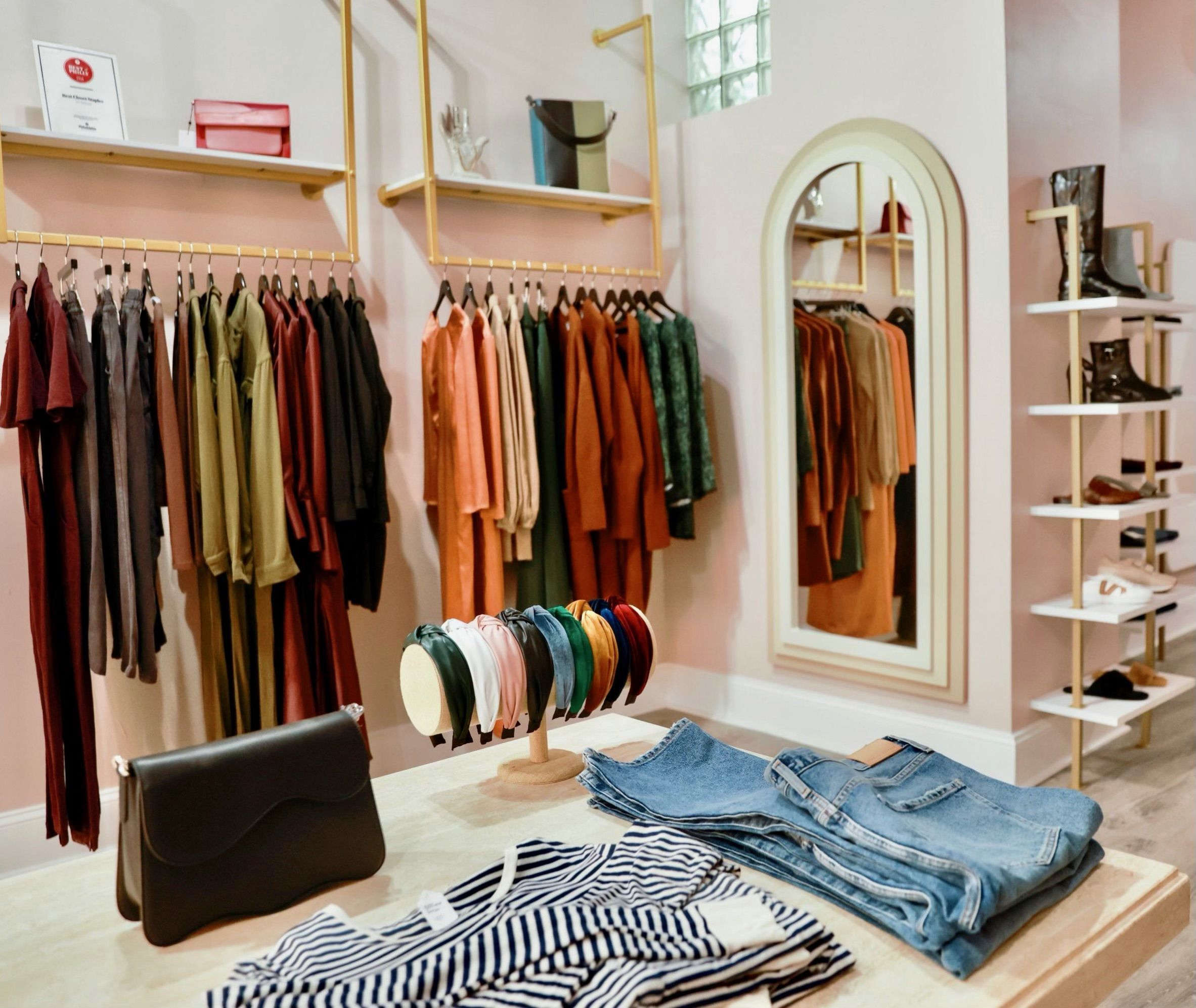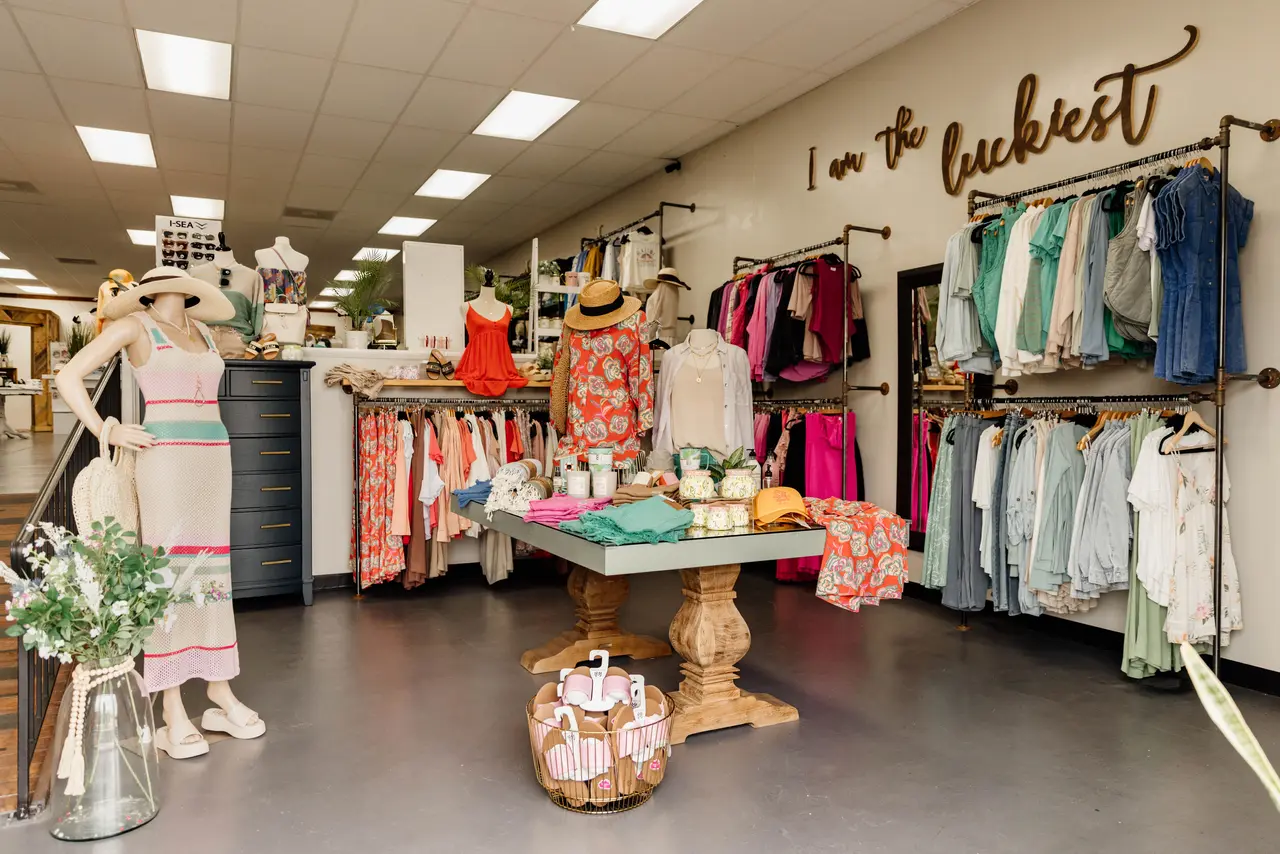The Influence of Social Media on Today's Boutique Fashion Trends
Wiki Article
Checking Out the Development and Impact of Clothes on Modern Fashion Trends
The advancement of garments has actually substantially influenced modern fashion trends, combining historic precedents with advanced developments. Iconic numbers like Coco Chanel and Yves Saint Laurent changed the style market by presenting principles that prioritize comfort and accessibility, which proceed to reverberate today.Historical Style Influencers
In the tapestry of style background, specific figures have actually left an enduring mark, shaping the fads and designs that define whole ages. Coco Chanel, an innovative designer, redefined females's style by introducing comfy, sophisticated clothing that left from restrictive bodices. Her famous Chanel fit and little black outfit have actually become timeless staples in wardrobes worldwide. In A Similar Way, Christian Dior's post-war "Makeover" in 1947, with its celebration of feminineness through full skirts and cinched waists, marked a return to opulence and has remained to influence developers.Elsa Schiaparelli is an additional pivotal number, renowned for her avant-garde layouts that incorporated surrealist art, working together with Salvador Dalí to create whimsical pieces that tested conventional visual appeals. Her cutting-edge use color and vibrant patterns resounds in modern fashion. Yves Saint Laurent, at the same time, equalized haute couture with prêt-à-porter collections, bringing path designs to the masses and establishing a criterion for modern-day ready-to-wear lines.
These enthusiasts, among others, not just revolutionized style in their times yet likewise set sustaining patterns that resonate in today's apparel industry, giving a structure upon which modern-day designers continue to develop and introduce. Their heritages underscore the importance of imagination and daring in fashion's ever-evolving story.
Technological Developments in vogue
Among the dynamic landscape of the garment industry, technological innovations stand at the center of advancement, reshaping how developers develop and customers engage with fashion. The integration of 3D printing has reinvented style processes, allowing developers to trying out intricate frameworks and sustainable products that were previously unthinkable. This modern technology assists in fast prototyping, decreasing waste and accelerating manufacturing times.
Smart fabrics, installing technology right into fabrics, are also transforming the market. Technologies like temperature-regulating and self-cleaning materials use enhanced performance and comfort. Wearable modern technology, integrating functions like physical fitness tracking and interaction, adds a new dimension to fashion, merging aesthetic appeals with usefulness.
Cultural Shifts and Style
As technological advancements continue to improve the style sector, cultural changes are similarly influential, redefining design and consumer choices. In recent years, the surge of social networks platforms has actually increased the circulation of international fashion fads, permitting varied social influences to exist together and merge. This electronic interconnectivity has actually assisted in the fast exchange of ideas, resulting in a much more eclectic and inclusive analysis of design that shows the diverse nature of contemporary society.Social recognition and gratitude have prompted designers to attract motivation from a wider spectrum of ethnic and historic contexts, integrating traditional concepts these details with contemporary appearances. This blend has resulted in style that resonates with a wider target market, promoting a feeling of identity and belonging across various demographics. Furthermore, the enhancing need for customization has driven brand names to provide personalized choices, enabling customers to go to my blog express uniqueness while reflecting their social heritage.
Furthermore, changing societal worths have affected fashion, with inclusivity and variety becoming central themes. The industry has actually begun to welcome models and influencers of different type of body, ethnic cultures, and gender identifications, challenging standard charm criteria. This change emphasizes the power of cultural shifts in forming the future of fashion, as style comes to be a more genuine expression of cumulative and personal identification.
Sustainability and Modern Layout
While the style sector continues to evolve, the vital for sustainability has actually ended up being progressively urgent, influencing modern design practices. The rise of slow-moving style, which stresses top quality over amount, urges customers to spend in ageless pieces rather than short-term patterns.In addition, contemporary design is identified by its development in lessening waste and promoting circularity. This approach not just mitigates ecological impact yet likewise boosts the social obligation of style homes.

Future Trends in Style

Sustainability will remain to be a driving pressure in forming future style patterns. The sector is progressively adopting green materials and moral production approaches, replying to a growing consumer need for accountable practices. Innovations such as bio-fabricated products and closed-loop recycling systems are established to redefine just how apparel is produced and taken in, lowering ecological impact while maintaining style and high quality.
Social changes, consisting of the increase of inclusivity and diversity, will certainly also play a critical function. As society ends up being more aware of social problems, fashion is expected to end up being a system for expression and modification. Developers will likely concentrate on developing collections that reflect a broader variety of identifications and experiences, promoting depiction and access.
Final Thought
The advancement of apparel dramatically influences modern-day style patterns, where historical influences combine with modern styles. This continuous evolution underscores style's function as a mirror to societal values and technical innovation, recommending a future rich with innovation and inclusivity.The evolution of apparel has actually substantially influenced contemporary fashion trends, combining historical criteria with innovative advancements.Among the dynamic landscape of the fashion industry, technical advancements stand at the forefront of development, improving how developers produce and consumers involve with fashion.While the style sector continues to advance, the imperative for sustainability has actually become significantly urgent, affecting contemporary design techniques. As sustainability becomes ingrained in modern layout, it paves the means for a more liable and mindful style market.
The advancement of clothes dramatically affects modern-day fashion patterns, where historical influences combine with contemporary designs.
Report this wiki page